DRAGON AGRO PRODUCTS
Aroids, Carnivorous Plants, Orchids
, Supplies & Unusuals
Miscellaneous Orchids
TERRESTRIAL ORCHIDS
JEWEL ORCHIDS
Orchids that have patterened and reticulated leaves are known
as Jewel Orchids. Usually distributed from northeast India throughout southeast
Asia and into Indonesia usually found in the low to medium elevation rain forests
and so require warm to intermediate temperatures, high humidity and relatively
shady conditions. Best place to grow this plants are in a terrarium.
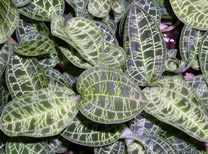 Macodes petola - Macodes Petola is one of the miniature jewel orchids. It is very unique in that the tiny veins that run through its l leaves are like lightning bolts with golden sparkles that twinkle when the light hits it just right. Very easy to grow and loves to stay moist and in low light3"; pot @$SOLD OUT
Macodes petola - Macodes Petola is one of the miniature jewel orchids. It is very unique in that the tiny veins that run through its l leaves are like lightning bolts with golden sparkles that twinkle when the light hits it just right. Very easy to grow and loves to stay moist and in low light3"; pot @$SOLD OUT
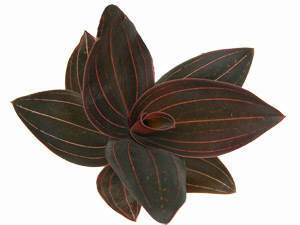 One of the best begginer orchids available. You will love it's velvety foliage and striking contrast in color. Grows in a multitude of environments with tolerable temperatures ranging from 34 degrees all the way up to 100 degrees. This is also a perfect plant to grow into a large specimen and has a similar growth habit to a wandering jew- 3" pot @$Call
One of the best begginer orchids available. You will love it's velvety foliage and striking contrast in color. Grows in a multitude of environments with tolerable temperatures ranging from 34 degrees all the way up to 100 degrees. This is also a perfect plant to grow into a large specimen and has a similar growth habit to a wandering jew- 3" pot @$Call
 Ludisia discolor variety -rare 3" pot sold out
Ludisia discolor variety -rare 3" pot sold out
Go to Top Page
 Arundina
Arundina
At first glance, the flowers of Arundina may be mistaken for Cattleya, except
that they are rather papery and the lateral sepals are close togehter, almost
hidden by the lip. The pseudobulbs of Arundina graminifolia grow close together
bearing many grasslike leaves with overlapping sheaths. The inflorescence is
held well above the plant and carries a succession of flowers at its tip, one
or two opening at a time and each lasting 3 to 5 days. The flowers are large
and striking with white petals and sepals and a contrasting purple lip. A patch
of yellow is present in the throat.
Arundina graminifolia is widely distributed throughout the Indo-Malaya region
and is found in open, sunny places, never in the shade of the forests. They
grow much better if potted in a large pot or planted on the ground and exposed
to full sunlight . The beds should have good drainage with broken brick at the
bottom and a good topsoil, well mixed with compost. The plants must not be planted
too deeply. When newly planted, the stems can be supported by stakes. They grow
well if given organic fertilizer. Old flower stems produce side shoots at the
base of the inflorescence and when these offshoots have produced a firm swelling
at the base they may be removed and planted into sand or gravel where they will
quickly produce roots. If cultivated in pots indoors, Arundina should be brought
out during the warm months and given full sunlight to facilitate flowering.
Plant offered is a division of our mother plant. About 6"~12" tall
@$SOLD OUT15<-->
Go to Top Page
PHAIUS
Phaius tribe are terrestial, sympodial orchids with large, decorative plicate
leaves, jointed at the base and a tall erect inflorescnce rising from the leaf
axil on the side of the pseudobulb. The Southeast Asian varieties prefer to
be in a moist to damp environment and not allowed to dry out. Pricing per 2
pseudobulbs unless noted otherwise.
Go to Top Page
Spathoglottis
The name spathoglottis is formed from the Greek words spathe and glotta which means broad
spathe, in reference to the broad midlobe of the lip. They have corn-like pseudobulbs which are exposed above the
soil with veined leaves. The inflorescence is tall, slender and erect, arising from a basal leaf axil and bears
small to medium-size flowers in succession. The flowers have sepals and petals equal in size with a tri-lobed lip.
The tip of the midlobe is widened and sometimes cleft. Water more when the plant is actively growing. in spring
and summer.
They are found growing on hilly slopes exposed to full sun in the morning till
noon under intermediate to warm temperatures unless noted otherwise.
 Spathoglottis kimballiana - The largest flower of the spathoglottis family , flower.
Spathoglottis kimballiana - The largest flower of the spathoglottis family , flower.
2-1/2-3-1/2" pot blooming size--$SOLD OUT
Go to Top Page
 CATTLEYA
Mericlones
CATTLEYA
Mericlones
I-BR-M-3" pot

Slc. Hazel Boyd 'Royal Scarlet' AM/AOS
|

Pot. Free Spirit 'Carmela' (SOLD OUT)
|
%20%27Carmela%27s.jpg)
Pot. (Makaha Gold x Free Spirit) 'Carmela' (SOLD OUT)
|

Lc. Mem. Robert Strait 'Blue Hawaii' (SOLD OUT) |

Blc. Burana Beauty 'Burana' HCC/AOS (SOLD OUT) |

Blc. Chia Lin 'New City'
Super Large 6"-7" Fragrant Flower(SOLD OUT) |
 CATTLEYA
Mericlones
CATTLEYA
Mericlones
I-BR-M-3"pot-

C. Sea Breeze 'Felraths Pride'(SOLD OUT)
|

Blc. Bethune 'Mendenhall' (SOLD OUT) |

Blc. Island Charm 'OC' |

Jeremy Island 'Carmela' |

Pot. Odom's Sweetheart 'Red Beauty' (SOLD OUT) |

Diaca. Chantilly Lace 'Twinkle' |

Lctna. Renate 'S&W' |

C. Hawaiian Passion 'Carmela'
Fragrant (SOLD OUT) |
%20%27Carmela%27s.jpg)
Blc. (Fred Stewart x Bonanza) 'Carmela'(SOLD OUT) |
 CATTLEYA
Mericlone
CATTLEYA
Mericlone
I-BR-M-3"-pot, @ $call

Lc Hawaiian Easter |

Pot. Hawaiian Charisma 'Hawaii' |
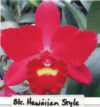
Blc. Hawaiian Style 'Callies Ruby' |
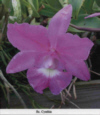
Bc. Cynthia 'Lilac Gem' AM/AOS |
| 
Blc. Tainan Gold 'Orchis'
|

Pot. Haw Yuan Gold 'O-2' |
|
|
|
|
|
|
|
|
|
|
 CATTLEYA
HYBRID & MERICLONES
CATTLEYA
HYBRID & MERICLONES
I-BR-M- 3-1/2" to 4" pot $Call
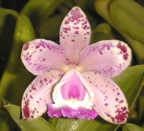
C. Orchidom Brabant
(C. Pink Brabant 'Spotted Doll' x C. Brabantiae 'Spotted
Flamingo' FCC/AOS)
|
C. Fort Motte
(C. Mrs. Mahler 'Mem. Fred Tomkins' AM/AOS x C. Brabantiae) |
Lc. Pink Spice
(Lc. Mari's Song 'CTM-217- AM/AOS x C. walkeriana 'Pendentive') |
Unregistered
[(Pot. Fort Fortune x (Blc. Bouton D'Or x Slc. Paprika) 'OJ'] |
Yam. Orchidom Green Glade
(Blc. Victor Umi Poltier 'Carla's Green' x Bepi Jin) |
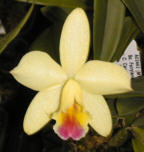
A02492
Sc. Fairyland 12-30'
(C. Candy Tuft x Sc. Beaufort)
|
| A02561
Epc. Kyoguchi 'M Sano'
(C. aurantiaca x Epi. aromaticum)
|
A05034
Blc. Haw Yuan Beauty 'Hong' AM/AOS
(Blc. Tokyo Magic x Lc. Suwada Song) |

A03149
Ctna Once Again 'Magic Bang'
(C. auirantiaca x Ctn. Why not) |
|
A03516
Lc. Secret Love 'Taida'
(Lc. Mini Purple x C. Candy Tuft) |
A2599
Slc. Kagaribi Dawn 'Red Star' BM/JOGA |
A02897
C. intermedia v. Alba 'M'
|
C50268
C. Heathii 'Taida #3'
C. C. lodigesii x C. walkeriana |

129
Ottara Hwa Yuan Bay 'Shi Shy' AM/OSROC |
198 |
381 |
323 |
A02983
Blc. Suan Putian 'M'
(Blc. Ports of Paradise x C. Moscombe) |
A08193
Pot. Sinfong 'Dawn' 228
(Lc. Kaaleu sequia x Pot. Love Passion) |
A02703
Lc. Tzong-Wen Love 'TS'
(Lc. Puppy Love x C. Aurantiaca)
|

C. Siam Jade 'Fuch's Key Lime' AM/AOS |
|
|
|
|
|
|
Go to Top Page
ENCYCLIA
Encyclia adenocaula - Mexico conical 3" bulbs topped with 2 or 3 long
narrow leathery 15" leaves, typically blooms June and July on 2 to 3 ft.
branching warty spikes with impressive 4" flowers, long pointed sepals
and petals are intense pink/purple, the wide flat lip is white heavily overlaid
with hot pink to purple striations, long-lasting blooms, easy grower.
I/W-BR-M-4" pot @$20
Go to Top Page
STANHOPEAS
Stanhopeas are epiphytes that bear the most dramatic looking incredible flowers with intricate and complex structures
and mechanisms for pollination, from channeled "walkways" for insects, to buckets of a watery solution.
All have inflorescences that grow downward, so the plants must be potted in hanging baskets with 1~2" slats
spacings at bottom or similar containers. Most flowers are spicily fragrant, and although the flowers are short-lived,
each plant may produce many inflorescences throughout the year. Stanhopeas are endemic to the New World ( Central
and South America and the Carribeans) Those found in Mexico requires some dry spell in order to flower. Just like
the Cymbidiums, when buying Stanhopeas, look for 3 or more pseudobulbs. The more pseudobulbs, the greater the likelihood
of flowering in a short time. The usual Stanhopeas seen in the wild have few pseudobulbs.
LIGHT should be bright, with direct sunlight diffused so as not to burn the leaves. The plants need to
be suspended due to their pendulous inflorescences. Light levels approximating those for cattleyas, or 3,000 foot-candles,
are best.
TEMPERATURES for Stanhopeas should be moderate: 52 to 60 degrees F at night, with day temperatures 68
to 75 degrees F in the winter. Plants can stand short spells of higher temperatures, but air movement, humidity
and shading must all be increased. Cool night temperatures seem to promote flowering. Many species flower in the
summer, and putting them outside in the summer may be ideal.
WATER in ample quantities is important to produce strong pseudobulbs and healthy flowers. They grow in
moist locations in open medium and watered frequently, especially when warm. Dry roots lead to leaf-tip dieback,
or a browning of the leaf tip. Watering frequency can be reduced in the winter months, but these plants should
never dry out completely.
HUMIDITY should be kept at 50% to 80%, and at high levels especially when temperatures are high. Frequent
misting reduces the chance of mite and insect infection; at the same time, strong air movement must be provided
to prevent spotting of the foliage.
FERTILIZER should be applied at regular intervals. Most growers fertilize with a diluted concentration
every week to two weeks. For plants in bark, use a 30-10-10 high nitrogen formulation, alternating with a 20-20-20
balanced formulation; in the blooming season, which is mainly summer, use a 10-30-20 bloom booster formulation.
Plants grown in osmunda need fertilization only infrequently.
POTTING is best right after summer bloom, as most plants seem to grow year-round. Plants that rest in
the winter may be repotted in the spring. The best flowerings come from large clumps of plants, so large baskets
with 1~2" spacing between slats are usually used. An airy, yet moist medium seems to work best, such as medium-grade
fir bark (often mixed with sphagnum peat) or osmunda fiber. Baskets are most often lined with moss before plants
are placed in the medium; this allows the pendulous inflorescences to grow through the bottom of the basket. Pre-moisten
the potting medium so that the roots do not dry severely after repotting. Vigorous plants may need repotting every
three years.
Available Plants: minimum 3 pseudobulbs Blooming Sizes bare-rooted @ $30 unless
noted otherwise.
Go to Top Page
References:
American Orchid Society
Home Orchid Growing 4th Edition , authored by Rebecca Tyson Northen and
published by Simon & Schuster, Simon & Schuster Building, Rockefeller
Center 1230 Avenue of the Americas, New York , New York 10020 ISBN 0-671-76327-X
Lecture on Stanhopeas by Rudolf Jenny at the JPC meeting at the Holiday
Inn North, Newark Airport, Newark, NJ on Nov. 1, 1997
100 Beautiful Himalayan Orchids and How to Grow Them by Udai C. Pradhan
/ Satyam C. Pradhan and published by Tej K. Pradhan, Primulaceae Books kalimpong
7340301, Darjeeling Gorkha Hill Council, West Bengal, India ISBN 81-85423-03-2
Go to Top Page
Dragon Agro Products
Copyright © 1994-2010
 Macodes petola - Macodes Petola is one of the miniature jewel orchids. It is very unique in that the tiny veins that run through its l leaves are like lightning bolts with golden sparkles that twinkle when the light hits it just right. Very easy to grow and loves to stay moist and in low light3"; pot @$SOLD OUT
Macodes petola - Macodes Petola is one of the miniature jewel orchids. It is very unique in that the tiny veins that run through its l leaves are like lightning bolts with golden sparkles that twinkle when the light hits it just right. Very easy to grow and loves to stay moist and in low light3"; pot @$SOLD OUT  One of the best begginer orchids available. You will love it's velvety foliage and striking contrast in color. Grows in a multitude of environments with tolerable temperatures ranging from 34 degrees all the way up to 100 degrees. This is also a perfect plant to grow into a large specimen and has a similar growth habit to a wandering jew- 3" pot @$Call
One of the best begginer orchids available. You will love it's velvety foliage and striking contrast in color. Grows in a multitude of environments with tolerable temperatures ranging from 34 degrees all the way up to 100 degrees. This is also a perfect plant to grow into a large specimen and has a similar growth habit to a wandering jew- 3" pot @$Call Ludisia discolor variety -rare 3" pot sold out
Ludisia discolor variety -rare 3" pot sold out Arundina
Arundina Spathoglottis kimballiana - The largest flower of the spathoglottis family , flower.
Spathoglottis kimballiana - The largest flower of the spathoglottis family , flower. CATTLEYA
Mericlones
CATTLEYA
Mericlones

%20%27Carmela%27s.jpg)











%20%27Carmela%27s.jpg)










